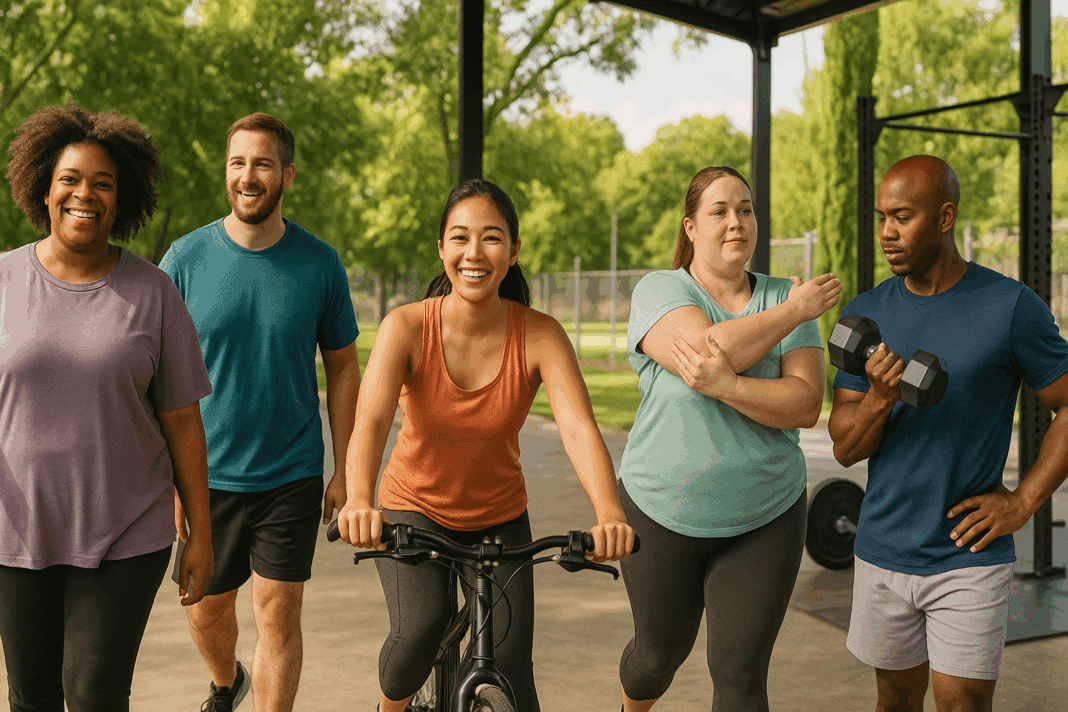Beginning a fitness journey can be one of the most empowering decisions a person makes for their overall well-being. For those wondering how to start working out or how to begin to exercise in a way that feels sustainable and rewarding, the key is to approach the process with intention, patience, and a clear understanding of your body’s current capacity and future potential. Embarking on this path not only enhances physical health but also contributes profoundly to mental clarity, emotional stability, and long-term resilience. In this article, we explore science-backed strategies and expert insights designed to help beginners build endurance, improve stamina, and maintain consistency without feeling overwhelmed or discouraged.
You may also like: Build Running Stamina Fast: Best Exercises to Increase Endurance and Boost Performance Naturally

Understanding the Motivation Behind Movement
Before diving into how to start exercising, it’s important to reflect on why you’re drawn to physical fitness in the first place. Whether it’s to increase energy levels, reduce stress, manage weight, or improve heart health, establishing a purpose can provide the internal drive necessary to stay consistent. This mental clarity also helps reframe exercise not as a chore, but as a vital investment in one’s own health.
When people ask how to get into working out, they often overlook the psychological component of fitness. Research in behavioral psychology shows that intrinsic motivation—the kind that comes from personal goals and values—is far more effective than external motivators like appearance or social pressure. Consider writing down your personal reasons for starting a workout routine, then revisiting them regularly as both encouragement and accountability.
Creating a Realistic and Personalized Workout Plan
For beginners, one of the most common pitfalls is doing too much too soon. Understanding how to start a workout routine requires acknowledging your baseline and building gradually from there. A workout plan should be tailored to your current fitness level, schedule, and interests. If you’re wondering how to start working out for beginners, think of your plan as a roadmap rather than a rigid blueprint—one that can adapt and grow alongside your progress.
Start with two to three sessions a week focusing on low-impact activities like walking, swimming, or cycling. These forms of movement build cardiovascular endurance while minimizing stress on joints and muscles. As you become more confident, you can incorporate strength training and flexibility work to create a well-rounded program. The best way to start working out is with movements you genuinely enjoy, as this increases the likelihood of long-term adherence.
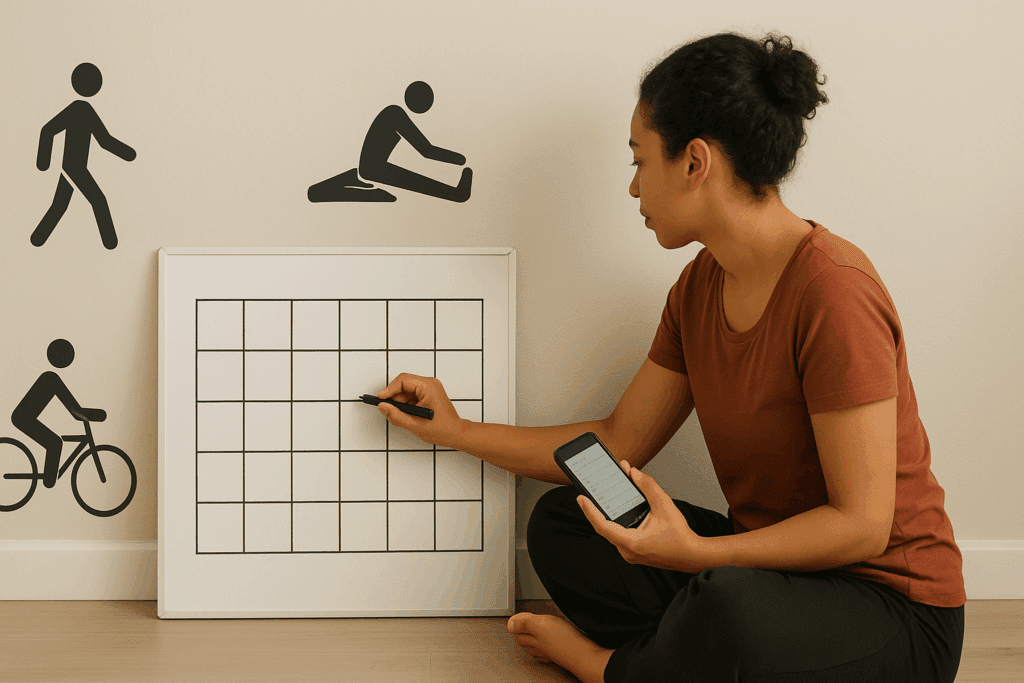
Setting Goals That Encourage Progress and Prevent Burnout
Establishing achievable goals is essential to stay motivated and prevent the kind of overexertion that leads to injury or discouragement. Rather than focusing on distant, aesthetic-driven objectives, shift your attention toward performance-based benchmarks. For instance, aim to walk briskly for 30 minutes without fatigue, or to hold a plank for 45 seconds. These tangible milestones provide positive reinforcement and signal meaningful progress.
When considering how to begin working out, many fall into the trap of comparing their starting point with someone else’s midpoint. Avoid this by tracking your personal progress through journaling, apps, or simple notes in your phone. Celebrate incremental improvements, such as completing an extra set or feeling less sore after a routine. These small wins contribute to a greater sense of achievement and serve as powerful reminders of why you started.
Mastering the Fundamentals of Form and Function
One of the most overlooked aspects of beginners fitness is learning proper technique. Good form not only enhances results but also protects against injury. Whether lifting weights, doing bodyweight exercises, or practicing yoga, understanding how to move correctly is foundational.
Working with a certified personal trainer or watching instructionally sound videos from reputable sources can provide the guidance necessary to build safe movement patterns. If you’re unsure how to get into exercise properly, start by mastering fundamental bodyweight movements like squats, lunges, push-ups, and planks. These compound exercises engage multiple muscle groups and mirror natural human movement, making them highly effective for building strength and coordination.
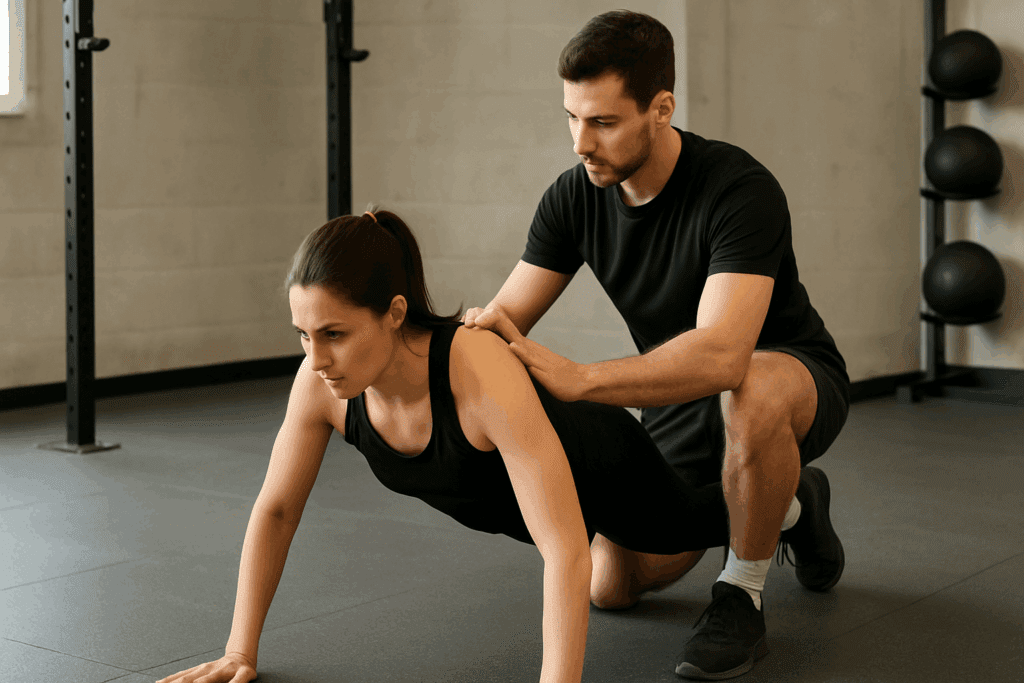
The Role of Warm-Ups and Cool-Downs in Performance and Recovery
Neglecting warm-up and cool-down routines is a common mistake among beginners. A dynamic warm-up prepares your muscles, joints, and cardiovascular system for exertion. It also helps improve range of motion, reduce muscle stiffness, and enhance overall performance. Examples include leg swings, arm circles, and gentle jogging in place. These movements elevate heart rate gradually and ready the body for more intense activity.
Cooling down, on the other hand, facilitates a smooth transition from exercise to rest. Static stretching, light walking, and deep breathing can reduce post-exercise soreness, enhance flexibility, and activate the parasympathetic nervous system, which promotes recovery. Understanding these components is critical when exploring how to start to workout in a sustainable way.
Nutrition and Hydration: Supporting Energy and Recovery
Fueling your body adequately plays a pivotal role in performance, endurance, and post-exercise recovery. Consuming a balanced meal that includes carbohydrates, protein, and healthy fats before a workout provides the necessary energy for physical exertion. For example, a bowl of oatmeal with berries and a spoonful of almond butter is an excellent pre-workout choice that stabilizes blood sugar and supports sustained effort.
Hydration is equally essential. Even mild dehydration can impair focus, reduce stamina, and increase the risk of cramps or fatigue. Aim to drink water throughout the day, not just before or after exercise. For longer or more intense workouts, consider incorporating electrolyte-rich beverages to replenish minerals lost through sweat. These principles are especially important for those new to fitness, who may not yet recognize the subtle cues of dehydration or nutritional deficits.

Building Endurance Gradually and Strategically
Endurance doesn’t develop overnight. It is the product of consistent effort, progressive overload, and strategic recovery. For individuals exploring how to get into exercise, the key is to focus on incremental gains. This means slowly increasing the duration, intensity, or frequency of workouts based on how your body adapts. For example, if you currently walk for 20 minutes, aim to add an extra five minutes each week until you reach your target time.
Cardiovascular endurance can be enhanced through activities like interval training, which alternates bursts of high-intensity effort with periods of rest or lower intensity. This method challenges the heart and lungs, leading to improved stamina over time. Strength endurance, on the other hand, involves completing higher repetitions of resistance-based exercises to improve muscular efficiency and fatigue resistance. Understanding the distinction between these types of endurance allows for a more balanced and effective training regimen.
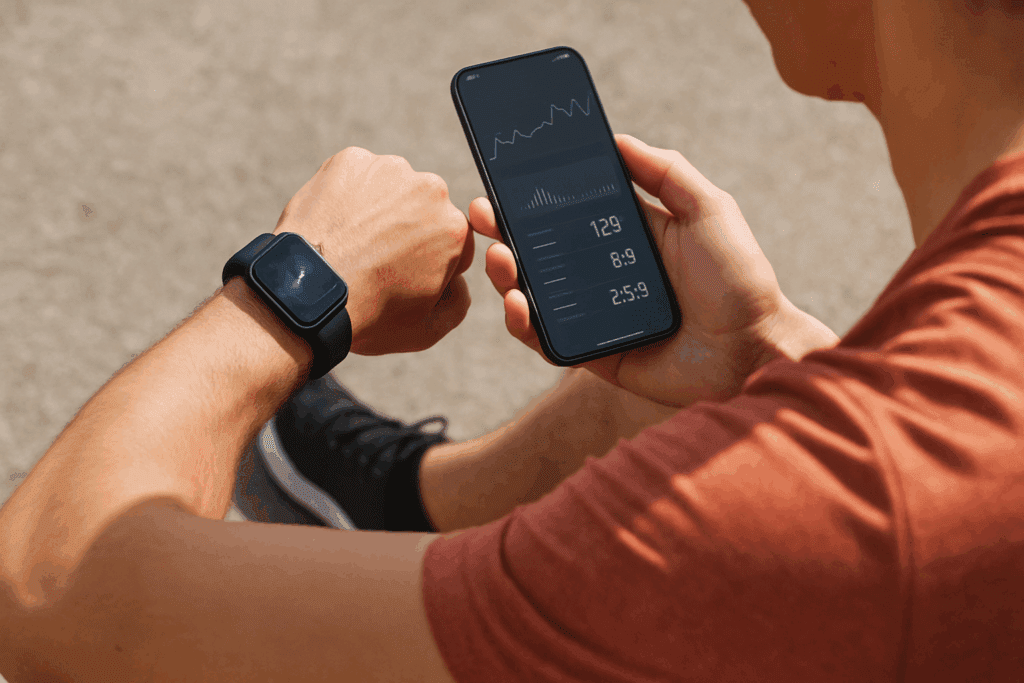
Staying Consistent When Motivation Wanes
Even the most enthusiastic beginners encounter moments of doubt, fatigue, or resistance. Developing consistency in your workout routine involves more than just willpower; it requires structure, habit formation, and mindset shifts. Incorporating exercise into your daily schedule as a non-negotiable appointment increases the likelihood that it becomes second nature.
Social accountability can also play a powerful role. Exercising with a friend, joining a class, or working with a trainer can provide encouragement and a sense of shared purpose. Additionally, consider the use of visual reminders such as calendar marks, fitness trackers, or even post-workout selfies to reinforce your commitment. These subtle psychological cues can keep you moving forward, even when motivation feels out of reach.
Overcoming Common Barriers to Exercise
Time constraints, fatigue, and self-doubt are among the most cited reasons people struggle with consistency. The best way to start working out in the face of these challenges is to acknowledge them without judgment and to find creative solutions. If time is limited, short sessions of 10 to 15 minutes can still yield benefits. High-intensity interval training (HIIT), for instance, offers efficient, effective workouts that fit easily into a busy schedule.
If energy is lacking, consider adjusting your exercise timing. Some people perform better in the morning, while others have more energy in the evening. Listen to your body and experiment with different times to find what works best. As for self-doubt, remember that progress is rarely linear. Every effort, no matter how small, contributes to the broader goal of improved health and vitality. Giving yourself permission to be a beginner is often the most liberating and motivating choice you can make.
Tapping into Technology for Support and Guidance
In today’s digital age, technology can serve as a valuable ally on your fitness journey. There are countless apps, wearables, and online communities dedicated to helping individuals understand how to start working out for beginners. Fitness trackers provide real-time feedback on steps, heart rate, and calories burned, while apps offer guided workouts, progress tracking, and even meal planning.
Virtual personal trainers, interactive classes, and social platforms allow beginners to learn from experts and peers alike. Many programs are specifically designed with beginners fitness in mind, offering modifications and progressive challenges to accommodate various levels. These tools empower users to take ownership of their wellness while benefiting from the structure and support that technology can provide.
The Importance of Rest and Recovery in Training Success
In the pursuit of endurance and performance, rest is often underestimated. Yet, recovery is when your body repairs tissues, rebuilds energy stores, and adapts to the physical demands you place on it. Without sufficient rest, you risk overtraining, fatigue, and even regression in performance. For beginners learning how to start to workout effectively, understanding the balance between effort and recovery is essential.
Sleep is a cornerstone of recovery, affecting everything from hormone regulation to muscle repair. Aim for seven to nine hours of quality sleep per night. Active recovery—such as light walking, stretching, or restorative yoga—on non-training days can enhance circulation and facilitate healing. Additionally, mindfulness practices like meditation or deep breathing can reduce cortisol levels and support emotional resilience, contributing to a more sustainable workout routine.
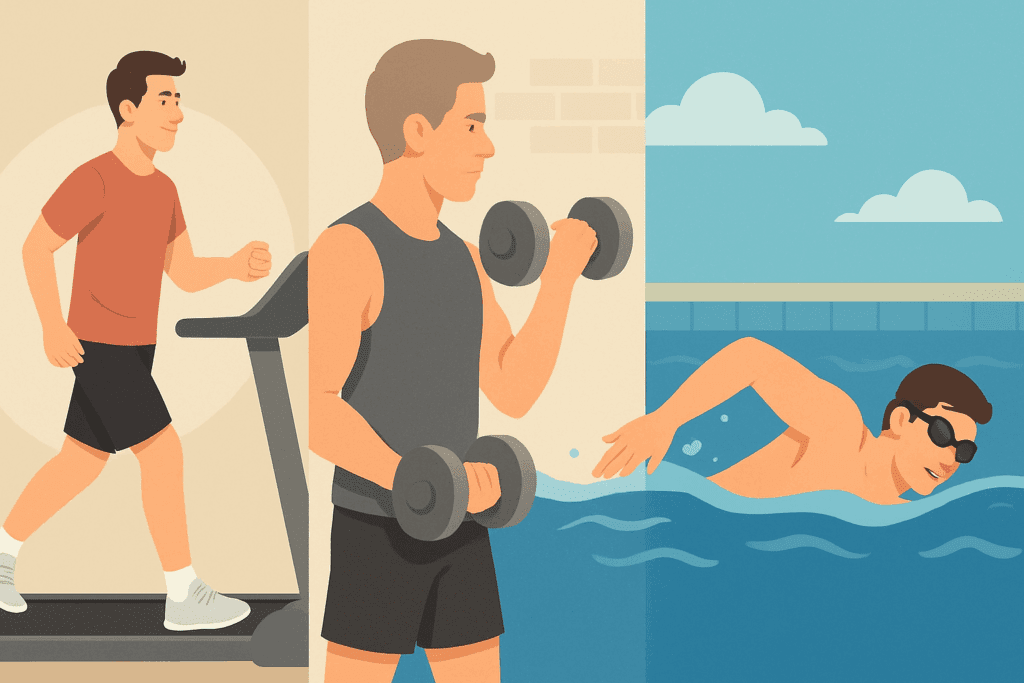
How to Evolve Your Routine As You Progress
Once the initial excitement settles and routines become familiar, it’s important to introduce variation to prevent plateaus. Periodization, or the planned variation in training volume and intensity, ensures continuous adaptation and improvement. If your goal is to continue improving stamina and performance, incorporating new activities, increasing resistance, or changing the order of exercises can challenge both the body and mind.
Learning how to begin working out doesn’t stop at the first few weeks; it evolves into mastering how to stay engaged and avoid complacency. Cross-training—participating in multiple forms of exercise such as running, weightlifting, and swimming—offers both physical and psychological benefits. It reduces the risk of overuse injuries and keeps your workouts fresh and interesting.
Cultivating a Long-Term Mindset for Lifelong Fitness
The journey into fitness is not a sprint; it is a lifelong endeavor that evolves with your goals, lifestyle, and body. Cultivating a mindset that embraces flexibility, curiosity, and compassion is key to maintaining both physical and mental health. Recognize that there will be fluctuations in energy, motivation, and progress, and that these are all normal parts of the process.
Beginner fitness should be framed not as a temporary phase but as the foundation for a sustainable lifestyle. Small, consistent actions compound over time, leading to profound changes in strength, stamina, and overall wellness. As you reflect on how to get into working out, remember that the true measure of success is not perfection, but persistence.
Frequently Asked Questions: How to Start Working Out for Beginners
1. What is the biggest mental hurdle when learning how to start working out, and how can I overcome it?
One of the biggest mental challenges people face when figuring out how to start working out is the fear of failure or judgment. Many beginners worry they won’t be good enough or that they will look out of place in a gym setting. To overcome this, it’s crucial to reframe your thinking. Instead of viewing exercise as a test, see it as a process of exploration and self-improvement. Setting small, manageable goals and celebrating progress—even if it’s just showing up—can build confidence and diminish self-doubt. Social comparison can be discouraging, so focus on how to get into working out in a way that feels personal, meaningful, and free of external expectations.
2. How do I stay motivated once the initial excitement of starting a workout routine wears off?
The drop in motivation after the first few weeks is common and doesn’t mean you’re doing something wrong. To stay committed, you need to find deeper rewards beyond physical results. Reflecting on how to start a workout routine with long-term goals in mind—like better sleep, improved focus, or emotional resilience—can help renew your drive. Varying your workouts also prevents mental fatigue and keeps things interesting. Additionally, journaling your experiences can remind you of how far you’ve come and why you began in the first place. Learning how to get into exercise from an emotional and psychological perspective often sustains commitment longer than purely physical motivators.
3. Can beginners fitness programs be effective without access to a gym?
Absolutely. For those wondering how to begin to exercise without a gym, the good news is that home-based fitness has evolved dramatically. Bodyweight movements, resistance bands, and digital fitness platforms have made working out at home more accessible and effective than ever. Beginners fitness doesn’t require fancy equipment; it requires structure, intention, and consistency. Even walking, climbing stairs, or using household items like filled water bottles can substitute for gym tools. The best way to start working out for those without access to fitness facilities is to focus on movement patterns that are functional, scalable, and easily integrated into daily life.
4. What role does personality play in determining how to start exercising effectively?
Your personality can heavily influence what type of exercise environment or program suits you best. Introverts may thrive with solo routines like running, yoga, or video-guided home workouts. Extroverts might gain energy from group classes or team sports. Understanding your social preferences and energy rhythms can help determine how to start exercising in a way that you’ll enjoy and stick with. Some people need external structure and accountability, while others prefer the freedom to self-direct their movement. Aligning your workout style with your personality creates a sense of alignment that boosts both motivation and enjoyment.
5. Are there cultural or lifestyle considerations that affect how people approach beginners fitness?
Yes, cultural beliefs, work schedules, and family dynamics all shape how someone may approach how to begin working out. In cultures where fitness is not embedded into daily life, individuals may need to overcome more psychological resistance to start. Parents or caregivers might struggle to find time or feel guilty for dedicating energy to themselves. In these cases, integrating exercise into family activities or establishing routines during low-demand times (like early mornings) can help. Understanding how to start to workout in a way that fits into your existing lifestyle—rather than forcing it to match a standard model—is key to creating sustainable habits.
6. How can technology support those who are just learning how to start working out for beginners?
Technology plays an increasingly important role in fitness journeys. Wearable trackers provide biofeedback, while apps offer guided routines, goal setting, and social connection. For those exploring how to start exercising without a background in sports or fitness, these tools offer structure and reassurance. Virtual reality workouts, AI-generated fitness plans, and interactive classes are making personalized fitness more accessible. Whether it’s using a smart mirror for form correction or joining an online community, technology can act as both coach and cheerleader for beginners navigating how to start working out effectively.
7. Is there a psychological benefit to learning how to start a workout routine beyond physical health?
Yes, the psychological gains can be just as transformative as the physical ones. Learning how to start a workout routine provides a sense of agency, which is empowering in a world full of uncertainty. Regular exercise increases neuroplasticity, improves emotional regulation, and builds self-discipline. These mental benefits compound over time, often leading people to explore new challenges outside of fitness. The process of discovering how to get into exercise can thus become a catalyst for personal growth far beyond the gym or living room.
8. What is an overlooked but effective strategy for beginners who struggle with consistency?
One overlooked strategy is incorporating micro-workouts throughout the day rather than relying solely on one long session. For someone wondering how to begin working out but constantly interrupted by work or family, this can be revolutionary. Doing five minutes of squats, stretches, or stair climbing several times daily adds up to significant movement without requiring a major time block. These micro-moments of fitness can build confidence and momentum, especially for those asking how to get into working out in the midst of a busy schedule. It lowers the psychological barrier to entry and builds the habit muscle in small but powerful ways.
9. What are some emerging trends that may redefine how to start working out in the future?
Emerging trends in fitness tech and neuroscience are shaping new ways to understand how to start to workout with greater precision. Personalized training plans based on genetic profiles, for instance, may soon become mainstream. Additionally, the rise of recovery-focused studios highlights a shift toward sustainable fitness. Mental fitness is also gaining traction, with mindfulness and breathwork being incorporated into traditional exercise routines. These innovations will likely redefine what it means to explore beginners fitness, moving beyond the simple “move more” mantra to more holistic, individualized approaches.
10. What advice would you give someone who has repeatedly failed to maintain a routine and wants to know how to start exercising again?
First, redefine failure as feedback. If you’ve tried before and stopped, that experience gives you clues about what didn’t work. Maybe the routine was too intense, the goals too vague, or the timing unrealistic. Reflecting on past attempts can help you create a smarter plan. Consider how to begin to exercise with a completely fresh mindset—perhaps starting with enjoyable activities rather than structured workouts. The key is to approach how to start working out with compassion and curiosity rather than pressure. Restarting is not a sign of weakness but of resilience, and each new attempt builds valuable insight for long-term success.
Conclusion: Starting Strong and Staying the Course
Learning how to start working out for beginners is not about finding the perfect program or achieving rapid results. It’s about cultivating a mindset that values growth, resilience, and self-care. From identifying your personal motivation to creating a realistic plan, mastering technique, and honoring rest, every step contributes to the larger goal of building endurance and enhancing performance naturally.
For those wondering how to get into exercise or seeking practical tips to working out, the path forward is not one-size-fits-all. It requires tuning into your body, setting meaningful goals, and adapting as you go. With each session, you build not only physical strength but also the inner discipline and confidence that transform exercise from a task into a treasured habit.
By applying these expert strategies and embracing a flexible, evidence-based approach, you lay the groundwork for a vibrant and resilient future. No matter where you are starting from, the best way to start working out is to begin—slowly, mindfully, and with the understanding that each small step forward is a victory in itself.
Was this article helpful? Don’t let it stop with you. Share it right now with someone who needs to see it—whether it’s a friend, a colleague, or your whole network. And if staying ahead on this topic matters to you, subscribe to this publication for the most up-to-date information. You’ll get the latest insights delivered straight to you—no searching, no missing out.

